
With a bountiful apple season on the way, are you prepared for the work – and joy – that comes with preserving a hundred apples? Or a hundred pounds of them?
Even if you have a single mature apple tree in your backyard, you’re sure to harvest much more than “an apple a day” in a productive season.
Keeping in mind, of course, that some apples will only gift you with a crop bi-yearly, which is also known as biennial bearing.
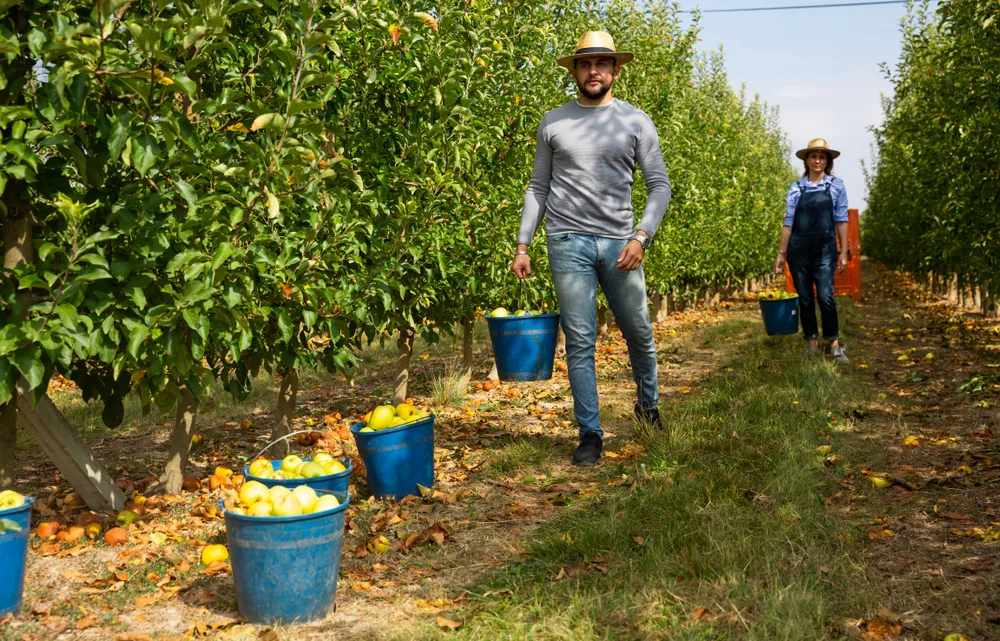
This happens for several reasons, such as unfavorable weather conditions, prolonged stress, nutrient deficiency, overly heavy crops, even including how the apple tree was pruned and whether or not the fruit is thinned at the beginning of the season.
There are so many factors that go into an apple harvest, along with choosing the right apple varieties which will grow well in your garden, that it’s hard to know what each harvest will bring.
One thing is for sure, when the apples are ripe, you’ll have to do something with them quickly.
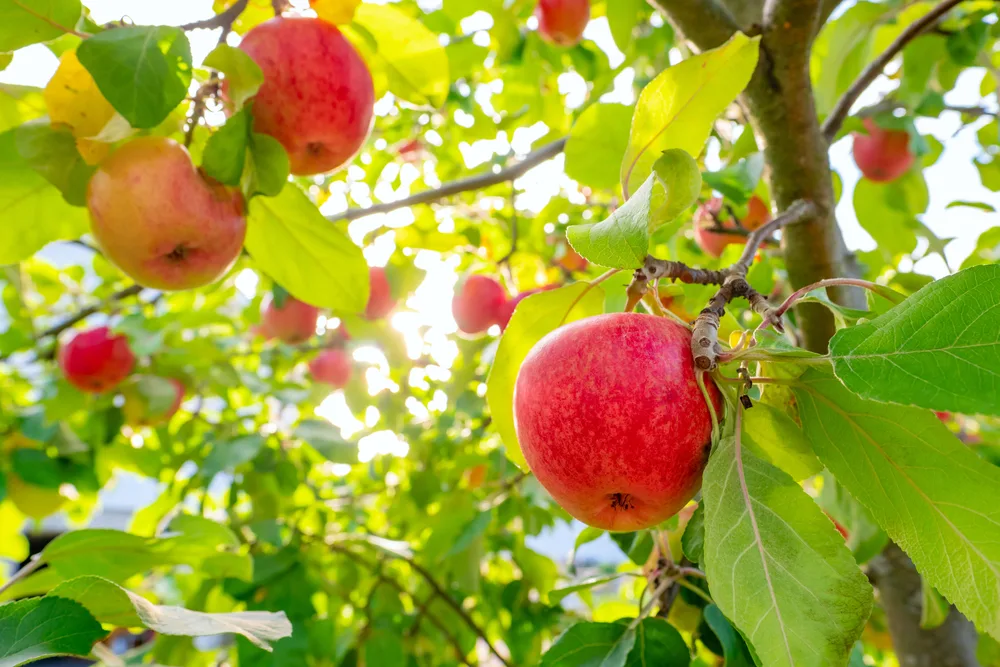
Some of the methods for preserving apples are super simple, such as storing them in a root cellar (that is, if you happen to have one). Other apple preservation methods are more complex, such as making hard apple cider or wine.
Learning to make apple sauce is always easy, even if you don’t intend to can it for long-term storage.
While your mind and your hands may be busy, focused on the harvest, don’t forget to enjoy fresh apples too. Add them to your cooked meals, salads, and skillet apple pie.
How many apples does an average tree produce?
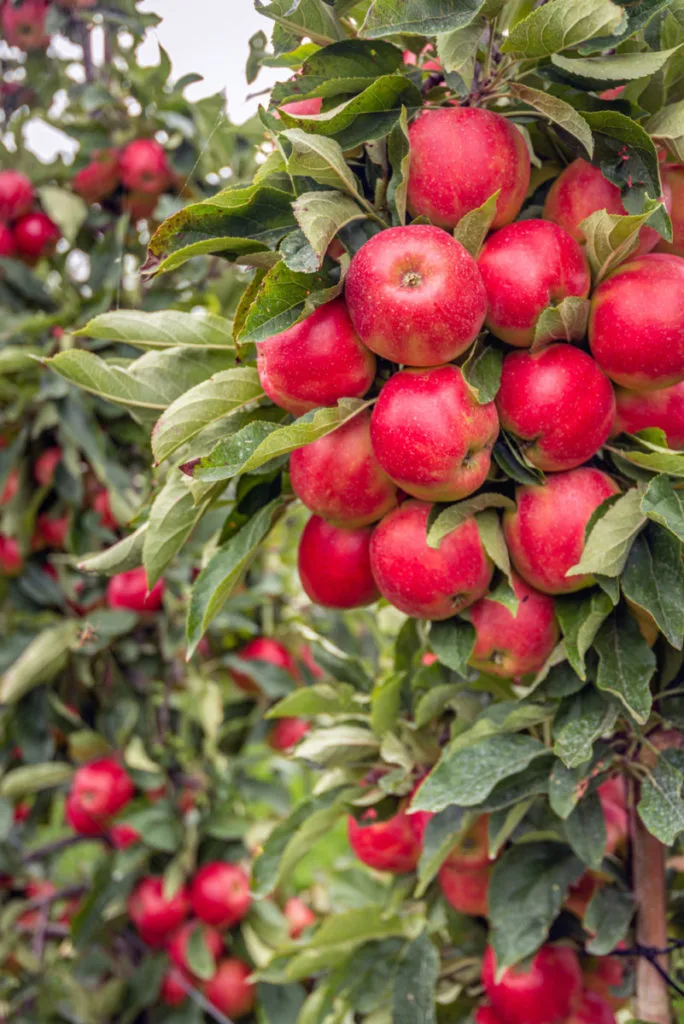
Quality over quantity is a constant lesson we need to learn in life.
This applies to apples too. A single tree can produce as many as 800 apples, though you need to look further than those big numbers.
- How is the flavor?
- Are the apples good for cooking?
- Summer or autumn harvested?
- Will they store for several months?
- Most importantly, do you enjoy eating your apple harvest?
While some apples are great for cider, they’re less tasty for making sauce. Some are better for baking, while others become mushy. Whatever the case may be, we know you’ll find a use for them.
You can even use both ripe and unripe windfall apples to make a variety of apple products to fill your shelves. They can also be fed to livestock, including your backyard chickens.
What you can expect from your apple harvest depends on more than just the weather, it matters what cultivars you’re growing as well.
Semi-dwarf trees (7-20 feet tall) can produce up to 500 apples in a very good season, whereas standard apple trees, which can grow up to 30 feet tall, can produce well in the range of 800 apples, or more.
Again, this takes into account a myriad of factors, including pollination, fertilization, irrigation, plant protection from insects, frost, etc. and the age of the tree.
Seasons can be hit or miss. That’s why, if you’re going to invest in planting an orchard, be sure to plant more than one cultivar to ensure a more even harvest throughout the years.
With more than 7,500 cultivars of apples worldwide, there is surely one that grows where you live – and tastes just how you like.
So, let’s get to preserving them!
Preserving Apples – Canning
Preserving apples isn’t just for the homesteader with land, and animals roaming the property. It’s also for the urban homesteaders and suburban household dwellers who just want to do something with their apples.
They can be plucked straight from the tree in the backyard, or gifted by some country relatives, foraged from suitable places, or bought at a market.
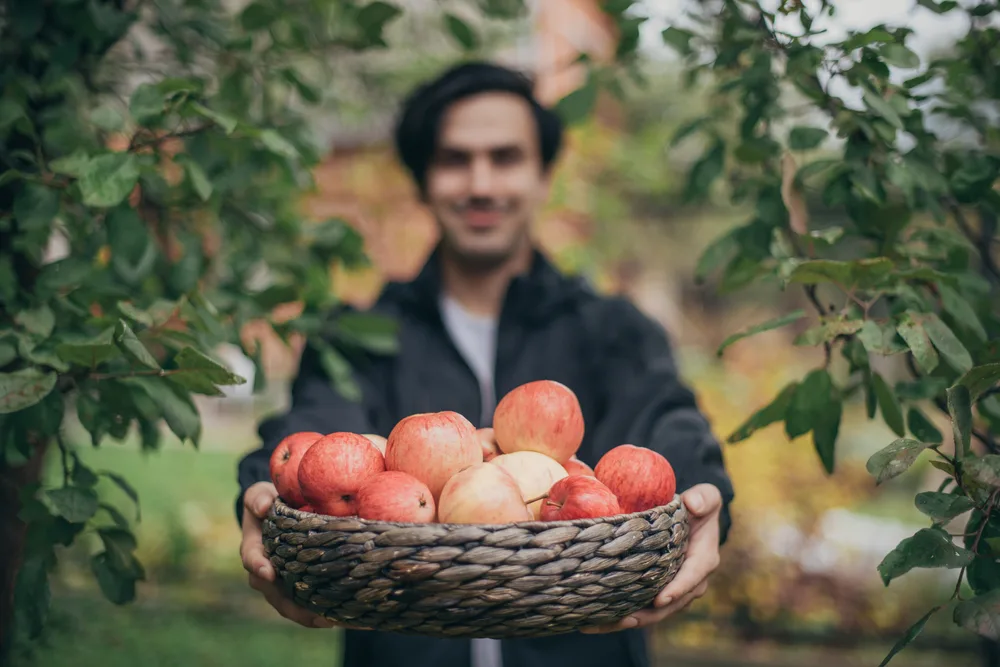
When apples are in season, the cost goes way down. In winter the price goes up. Sometimes you may even receive a bucket of apples for free.
The first thing you need to decide before forging ahead with canning plans is what your particular variety of apple is best suited for.
Can they be secretly tucked away in chutney with other aromatic ingredients, or will they make the perfect sauce? Will they be better in compote, or put into a batch of apple cider vinegar?
Once you figure it out, you’re ready to take action – which can turn into several hours or even days. In the end, it’s worth it. Good food always takes time.
Here are some suggestions for canning and preserving your own abundance of apples (many of these can be made in smaller batches too).
1. Applesauce
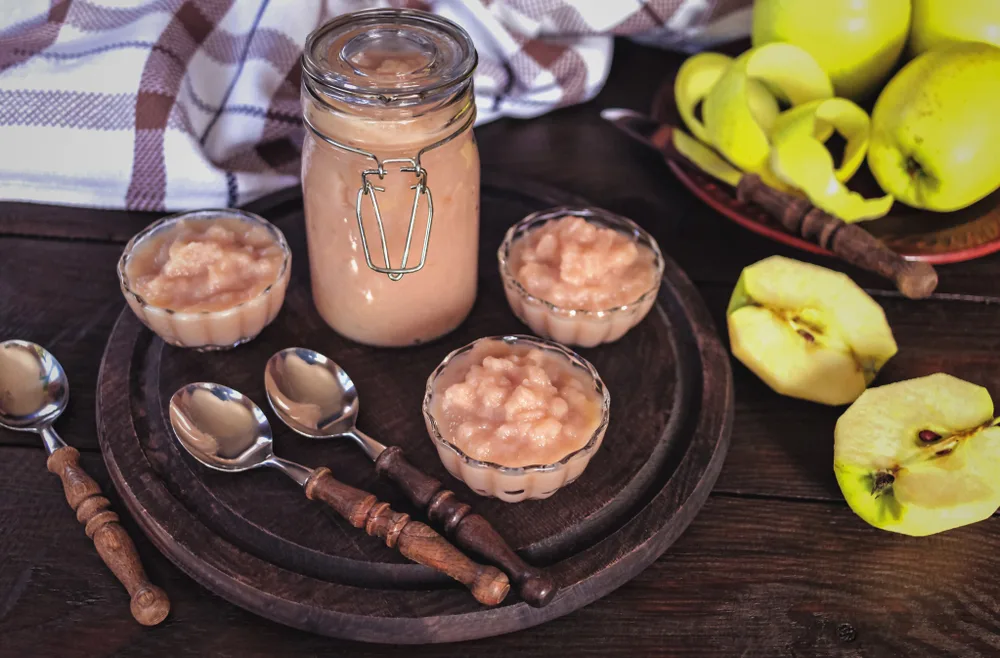
The most classic apple dish you can think of.
But, did you know when you make it at home you can skip the sugar entirely? You can also add as much cinnamon as you like. Honey? Sure, stir a tablespoon in for exceptional flavor.
Homemade applesauce can be chunky or smooth; sweet or tangy. At home, you’re in charge.
If you end up making 20 jars or more, there’s no need to worry about how you will eat them all in one year. Homemade applesauce is perfect in applesauce cakes and applesauce and pork is a classic combo.
With lots of apples, applesauce is one of the easiest ways to use up a bushel.
Here’s our recipe for making your own applesauce at home. It couldn’t be easier.
2. Apple Butter
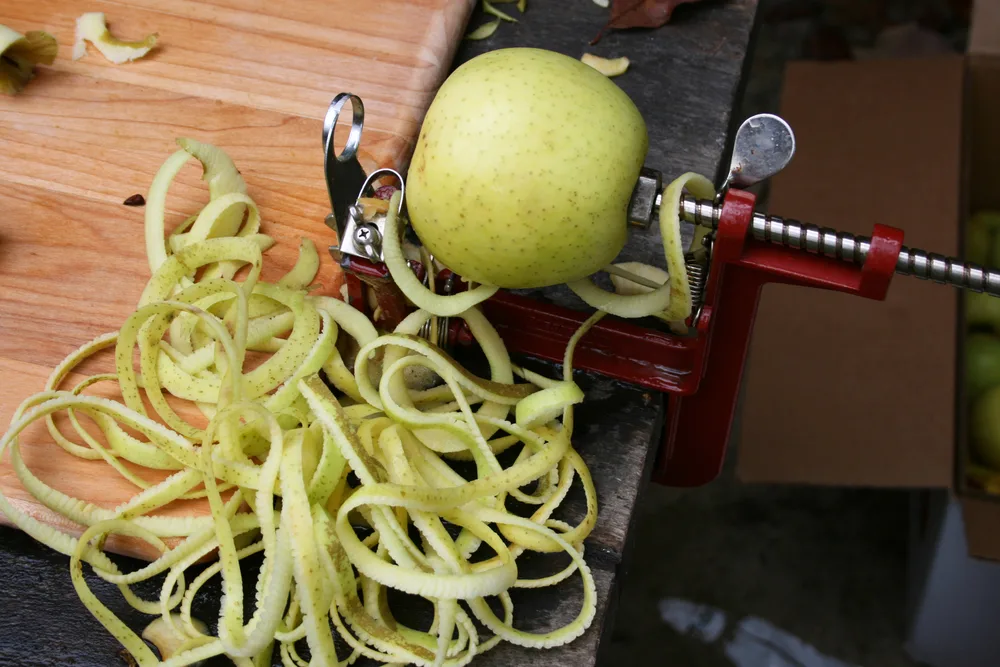
Get out your apple peeler for the canning season – you’re going to need it!
Not only for making apple butter but for just about everything else. See, when you chop up apples and leave the skins on, what you end up with, is hard-to-chew pieces of curled skin, that really don’t belong in your jam.
It may save you some time in the kitchen to avoid peeling your apples, but for canning in general they’re best peeled to prevent a disappointing end product.
With a slow cooker and 6 hours for doing something else with your time, why not try this most delicious way of canning apple butter. Your jars will thank you.
3. Apple Slices and Apple Pie Filling
If you have room to spare in your pantry, you may be interested in canning apple slices for future winter pies.
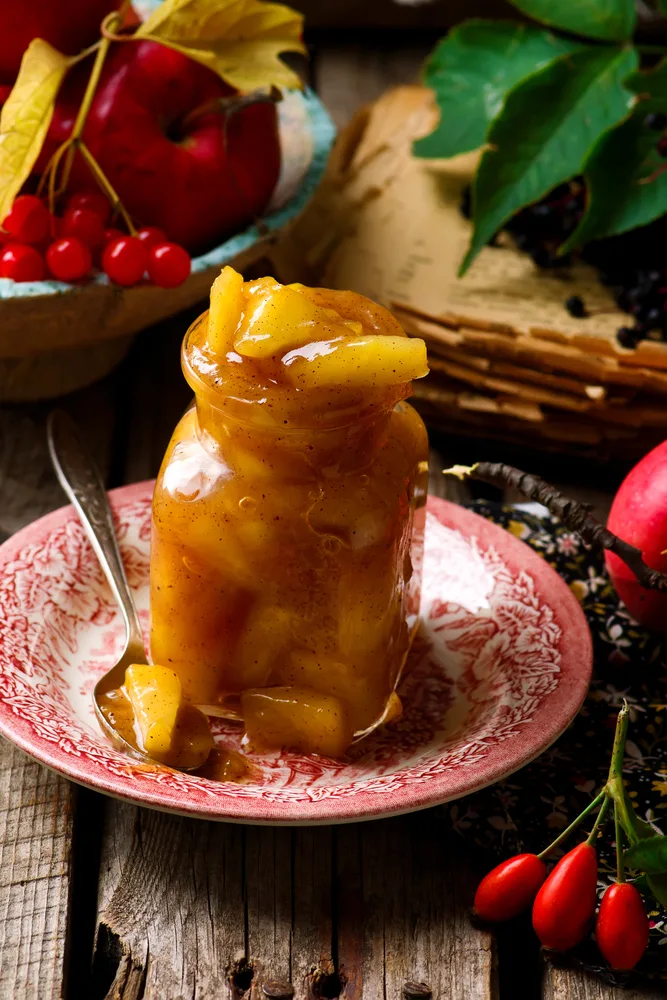
Since this recipe calls for already peeled, chopped, seasoned, and thickened apple slices, you’ll be ready to set a pie in the oven as soon as guests arrive.
There will be times, however, when you just want to dive into a jar of crisp apple slices, without cinnamon and nutmeg, to let the flavor of the autumn- harvested apples shine through.
If you’re keen on canning apple slices (to keep them crispy), scroll no further.
4. Apple Jelly
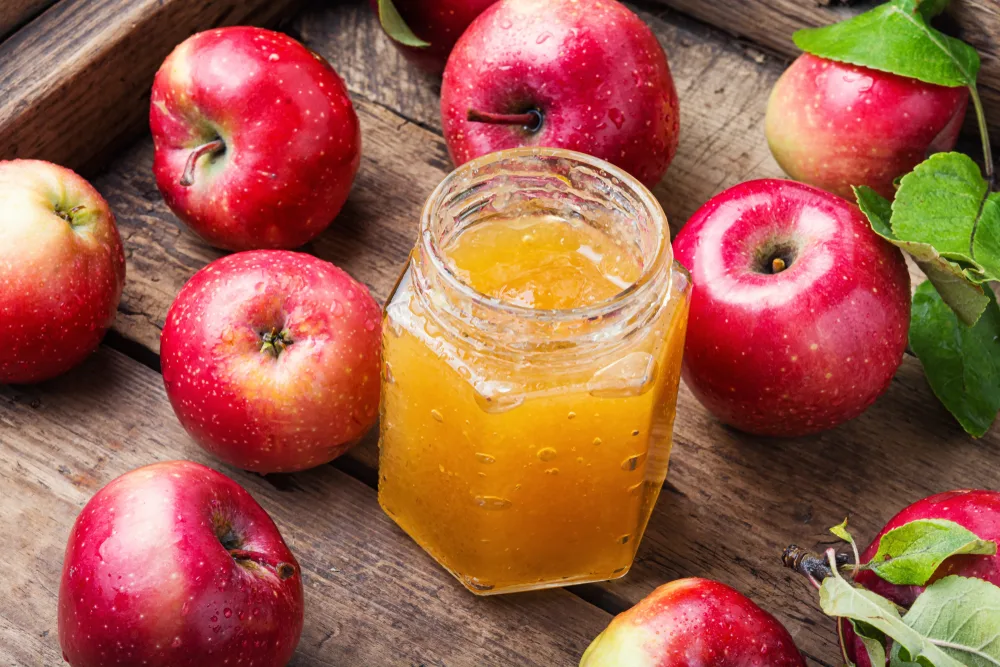
If you’re seeking an intense apple flavor, more than what applesauce can provide, why not try making a few jars of spiced apple jelly?
The color alone is one reason for preserving it. The other, is that it tastes amazing on French toast, or atop a bowl of steaming oatmeal.
The key to a successful apple jelly is in choosing the right apples and in having the right amount of sugar.
Keep in mind that less ripe and/or tart fruit has more pectin in it than overly ripe fruit. For that reason, you should always add some underripe apples to the pot when cooking up a batch of jelly.
5. Apple Chutney
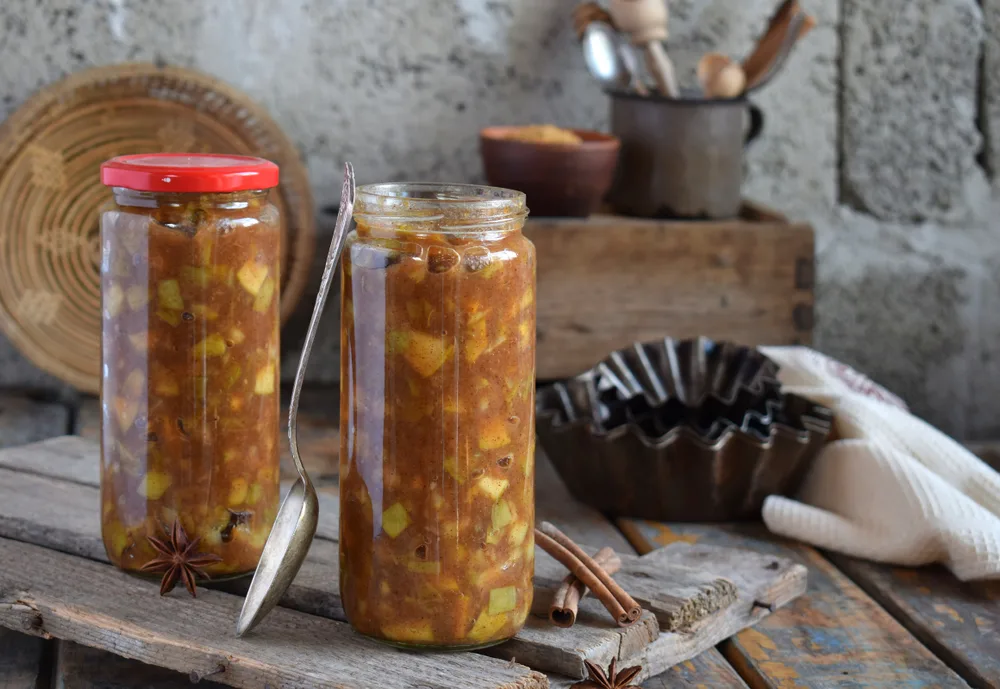
Rhubarb chutney, peach chutney, plum chutney, tomato chutney… You name it and I’ll eat it.
Every season we always make sure to can chutney, because it’s a wonderful way to combine fruits and vegetables in a mouthwatering way that’s less sweet than jam and sweeter than pickles. It’s an in-between food that everyone in the family can enjoy.
When apples start falling, it’s time to make apple chutney.
There are several ways to make chutney, so I’ll just share a few to get your creativity flowing:
Apple Ginger Chutney @ Bernardin
Indian Apple Chutney @ Healthy Canning
Adaptable Chutney Recipe With Apples, Ginger & Lemon @ Alexandra’s Kitchen
6. Apple Salsa
Similar to chutney, yet not quite the same, is apple salsa – a recipe to celebrate “Fall and all things Fallish”.
As it includes tomatoes, onions, and peppers, it’s a wonderful way to use up the rest of your garden harvest, should events be so aligned.
This year we’ll be adding jars of apple salsa to our pantry for certain. It will be nice to have when it isn’t possible to keep a batch of wild fermented salsa going on the shelf.
7. Whole Apples
We aren’t thinking about preserving whole Golden Delicious or Jonathan apples here, rather the tiny, underused crabapples.
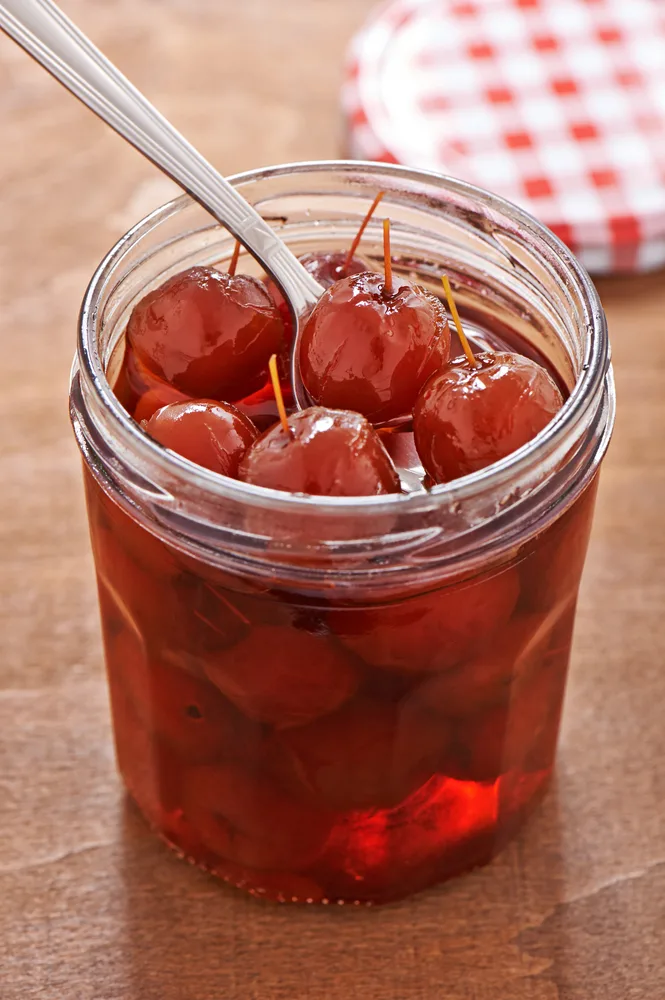
In the past, it seems that everything was smaller. Cars, houses, food portions, and yes, even apples. Start digging into fruit history and you’ll find many recipes for heirloom varieties and crabapples.
If you’re one to seriously consider how much food is wasted each year, this old-fashioned spiced crab apple recipe may just be for you.
Have you got a crabapple tree? If so, here are fifteen more brilliant recipes for using those tiny little fruits.
8. Apple Pectin
Pectin can be made from both unripe and ripe apples, giving you a chance to use up all that is good – and unsuitable for fresh eating.
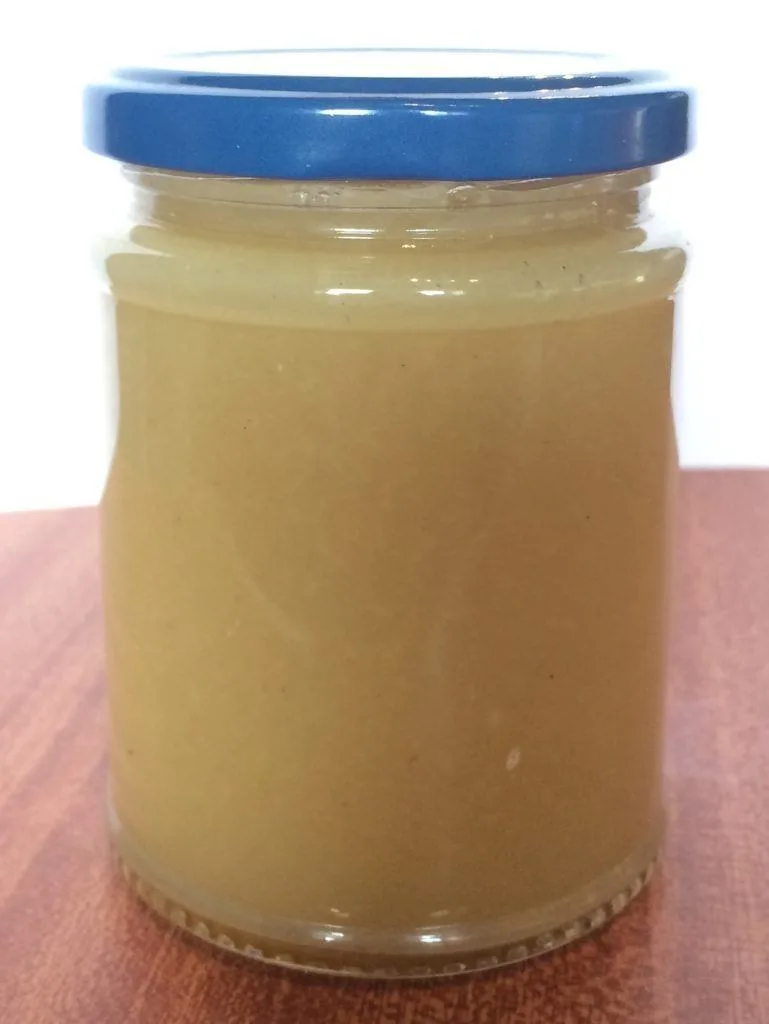
Homemade apple pectin makes a great alternative to powdered pectin, and it’s super easy to make, for when you need to help gel other low-pectin fruit jams and jellies.
Pectin can be made from apple scraps and water. As you peel and core your way through hundreds of apples in the preservation of sauces, salsa, and chutney, be sure to save the scraps before tossing them on the compost.
With the shortest instructions, all you need to do to make apple pectin is:
- gather apple chunks, cores and peels
- add them to a pot with water, just enough to cover the bottom (not to burn straight away)
- bring it to a boil, reduce heat and simmer for about an hour until mushy
- strain the liquids off overnight, using a jelly bag or several layers of cheesecloth
- can the strained liquid pectin for later use – or try it fresh!
Here is our tutorial for making apple pectin from unripe windfall apples.
9. Freezing Apples
Using a freezer to save food for longer periods of time, is definitely among the more modern ways of preservation, outside of freeze-drying.
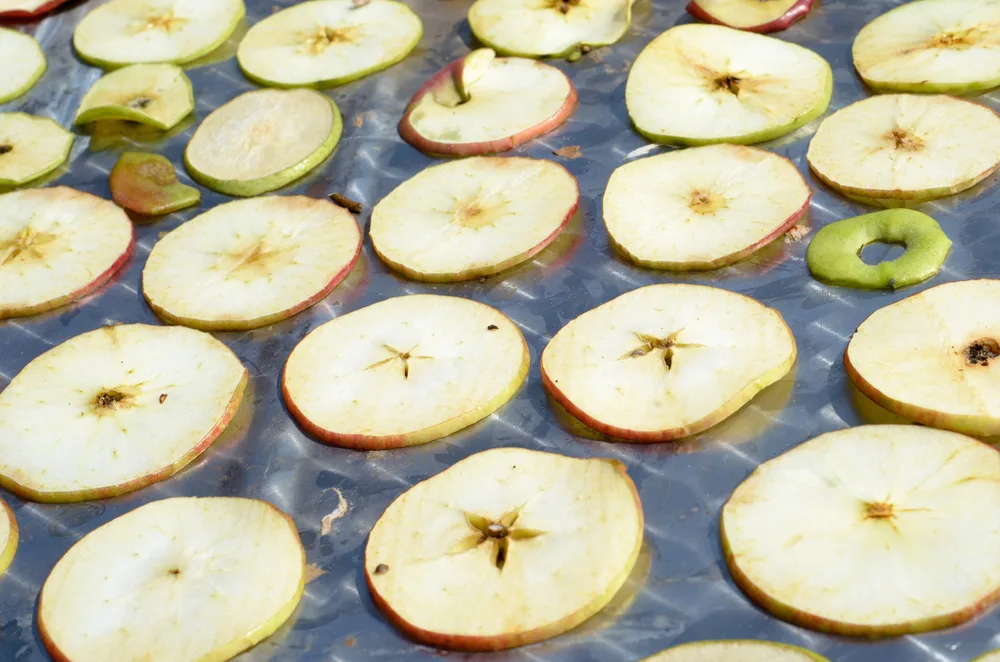
Freezing apples is extremely easy. It goes something like this:
- Peel and core your apples – saving the peels for dehydrating, or for the compost.
- Make a lemon juice bath to soak the cut apple slices in.
- Soak for 5 minutes (to prevent browning), remove and strain.
- In a single layer, arrange the apple slices on a baking sheet.
- Freeze for several hours, or overnight.
- Once completely frozen, you can transfer the apple slices to a freezer bag, or other container, storing them for up to a year.
Not only can you freeze apple slices, even whole apples, but you can also freeze apple pie filling and apple sauce too. Which works out great in case you happen to run out of jars.
Some people prefer to blanch their apples before freezing, while others add salt to the water. Guess you’ll just have to try this one and see for yourself what works better.
Dehydrating is a great way to preserve apples
Dried fruits date back far in the past. Yet, we’re still enjoying them today. Everything from banana chips to dried coconut and figs and, of course, dried apples.
Originally, they would have been sun-dried, but modernity has introduced us to the possibility of using our ovens to dehydrate fruit on the lowest settings, and even using a kitchen-friendly dehydrator to dry multiple trays at once.
10. Dried Apple Slices
In the search for healthy snacks, you might have already found it’s better to make your own.
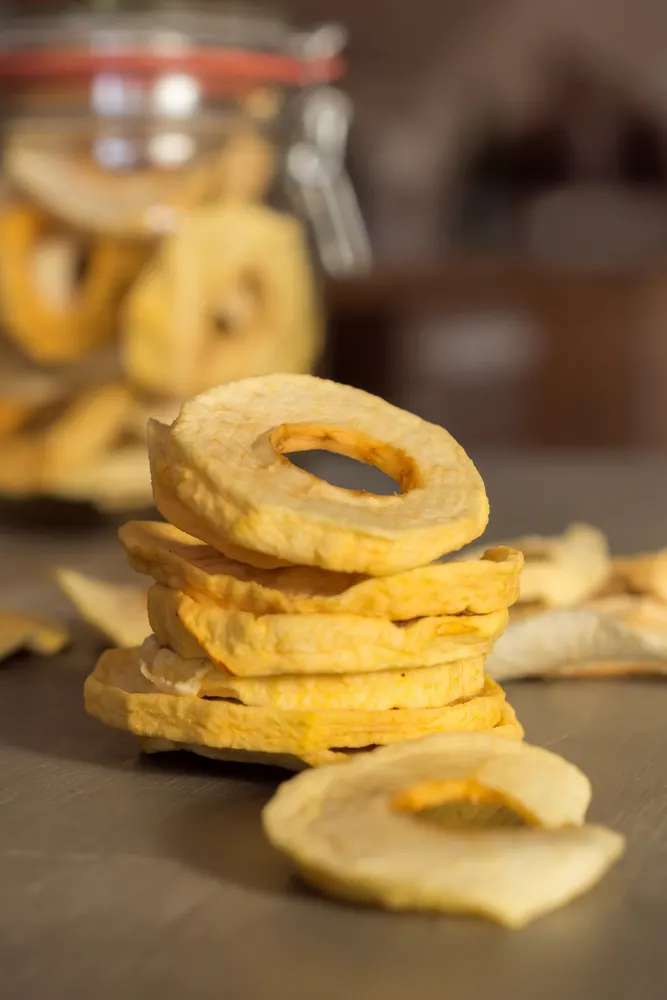
This is true of dried apples as well.
And it couldn’t be easier than harvesting, washing, coring, slicing, and dipping the slices in a solution of lemon juice (pineapple-orange juice or ascorbic acid) and setting them to dry in your dehydrator.
Alternatively, you could also dry them over a wood stove, or set them outside, on a frame covered with cheesecloth, in the sun.
Everything you need to know about drying apples is right here in this article:
How to Dry Apples @ Jennifer’s Kitchen
11. Apple Fruit Leather
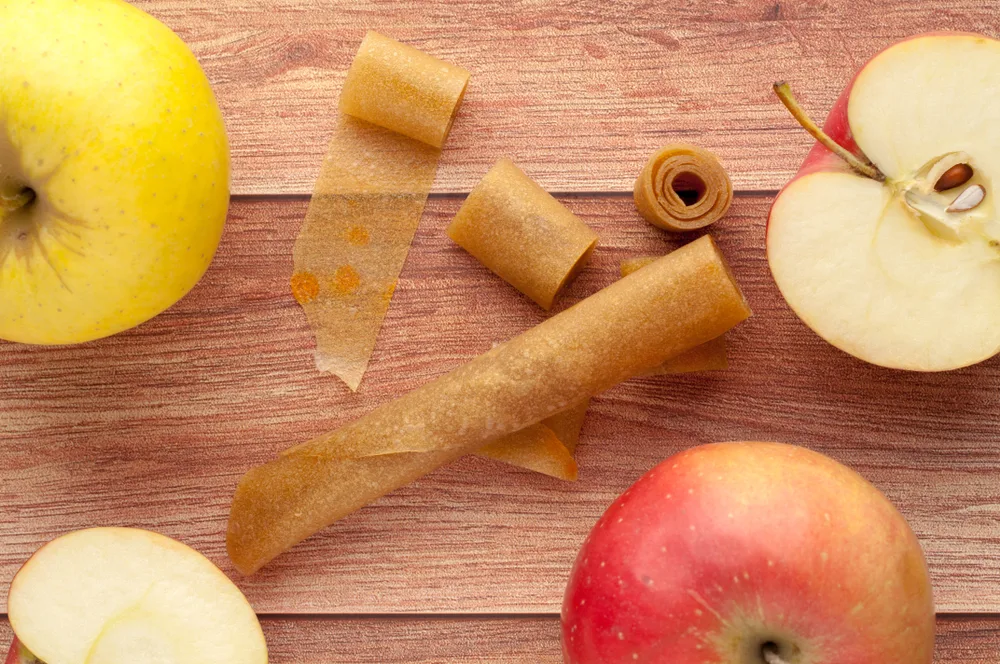
Another delicious way to preserve apples, is in the form of homemade apple cinnamon fruit leather.
Different apples will turn out with different flavors, so use this as a time to experiment and find out what tastes the best for your family.
You can go sugar-free if you’re using sweeter apples, or add some strawberries into the apple mix before dehydrating in sheets.
For an additional energy boost, you can even sneak in some baby spinach, which will, of course, make it green. But green is cool and it’s something to show off at lunch.
While you’re at it, play around with other ingredients to add to your apple fruit leathers such as blackberry, pears, or even sweet potatoes. Now that’s something to think about!
Preserving Apples in Liquid Form
As you read through the following ways of preserving apples in (mostly) drinkable fashion, imagine sitting in the fragrant autumn orchard, a glass of hard cider in hand. The wind is swaying in the branches, as the ripest apples fall to the ground.
Hopefully not on your head though, that hurts.
12. Apple Juice and Apple Cider
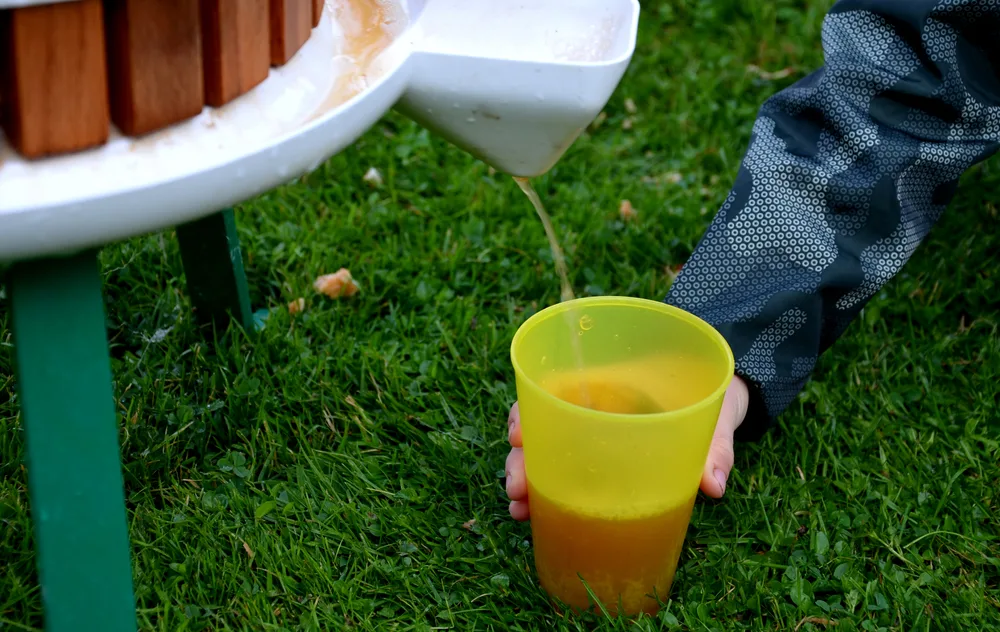
A couple of years ago, our small apple orchard was in full fruition.
Besides storing many apples in the cellar for fresh eating throughout the winter, and eating as many as we possibly could fresh, we decided to turn the rest into apple juice.
We took several sacks of apples to a neighboring village and waited while they turned our loot into 150 liters (40 gallons) of apple juice.
It was way more than we could ever drink in a year!
And difficult to sell – because everyone has the same problem of overabundance. We won’t even go into how much brandy was produced that year. People will probably be telling stories about it for years to come.
If you’d like to try your hand at making apple juice at home, here is one way to make it.
13. Hard Apple Cider
If you’re feeling more adventurous still, how about learning to craft your own hard cider?
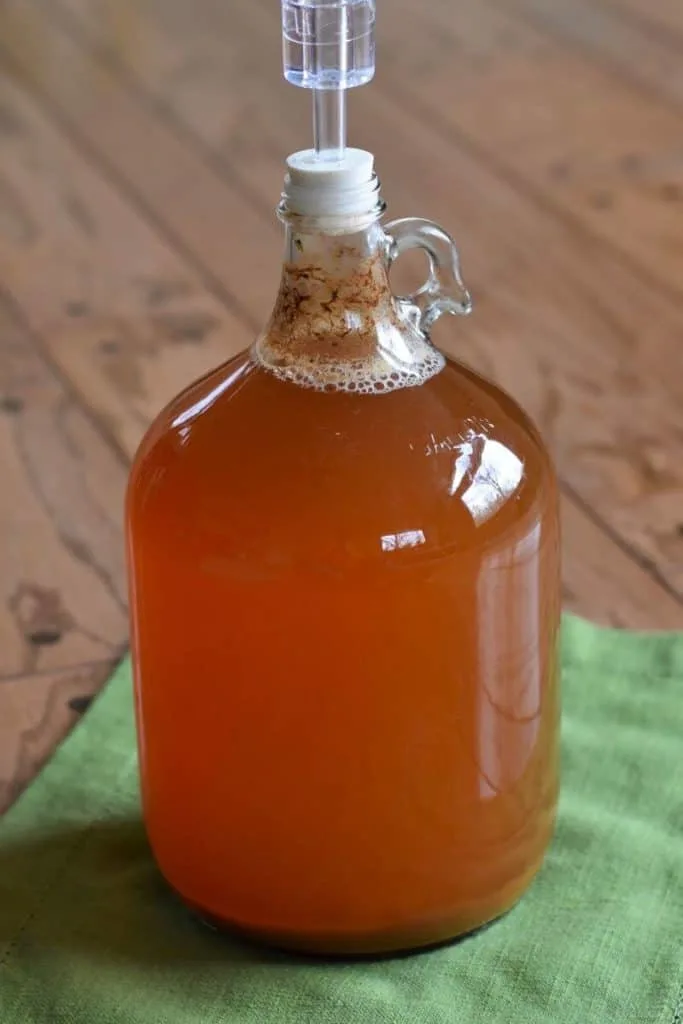
Fellow Rural Sprout author, Tracey, has a tutorial to walk you through the steps right here: No-Fuss Hard Apple Cider – An Introduction to Homebrewing
Once you really get into it, the art of making cider may spark something deep inside, maybe even inspiring you to grow the best cider apples around.
Slowly you’ll be introduced to new-to-you varieties such as Winesaps, Newtown Pippins, and Rome Beauties. Next thing you know, you’ll be bottling your own famous hard cider like a pro.
14. Apple Cider Vinegar
Making apple vinegar from scraps is what many people mistakenly confuse for apple cider vinegar. While apple cider vinegar from scraps is a great way to use up leftovers from other apple preserving endeavors (note that it should never be used for canning), technically it’s not apple cider vinegar.
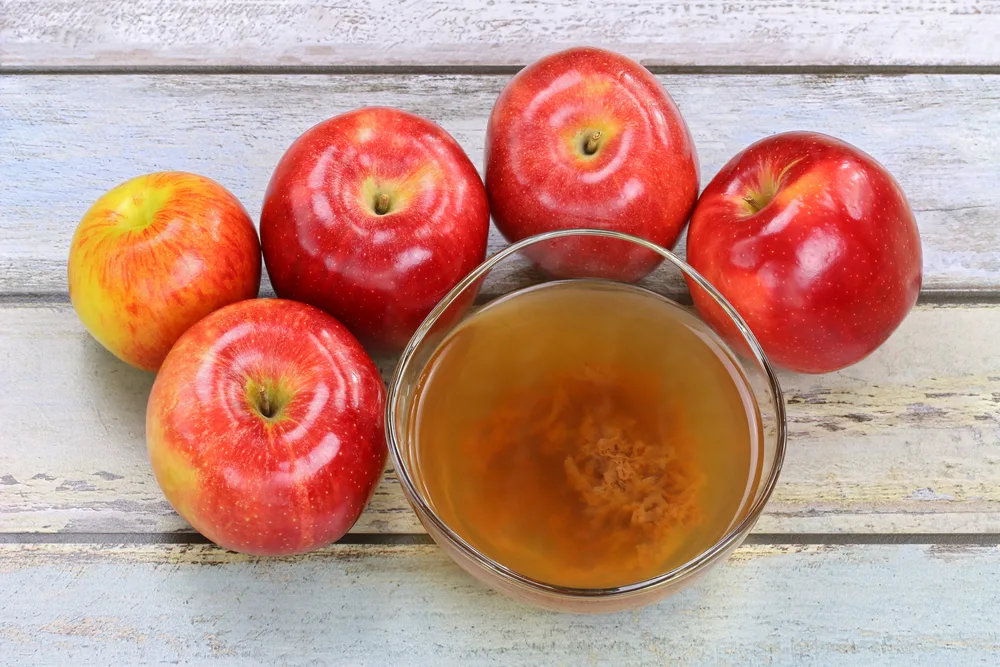
In order to make a true apple cider vinegar, you first need to make apple cider, then magic that cider into vinegar. The process is longer than what we can go into here, but if you’re still curious, here is our article which reveals how to make both apple scrap vinegar and true apple cider vinegar.
15. Apple Wine
If hard cider isn’t really your thing, have a try at making apple wine. It’s quite simple to do.
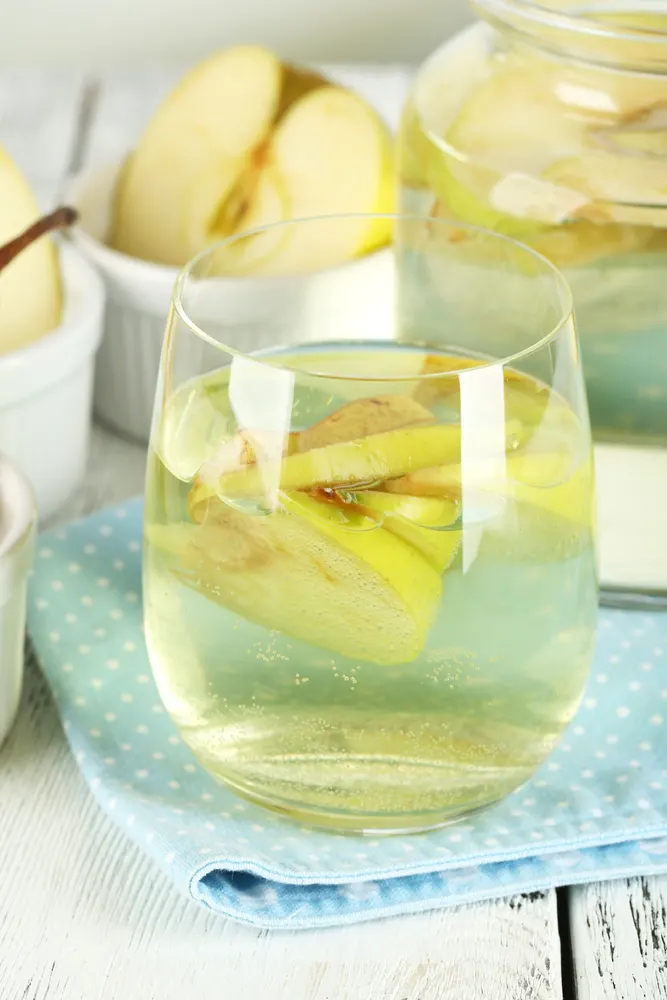
It all starts with apple juice, which can be either homemade or store-bought.
If you’re starting your apple wine from commercially prepared juice, be sure to avoid any bottles that have added preservatives such as sodium benzoate or potassium sorbate. They will prevent fermentation.
With just a gallon of apple juice you can get started today on making your own homemade apple wine.
16. Apple Shrub
If you’ve never tried a drinking shrub before, there’s a first time for everything.
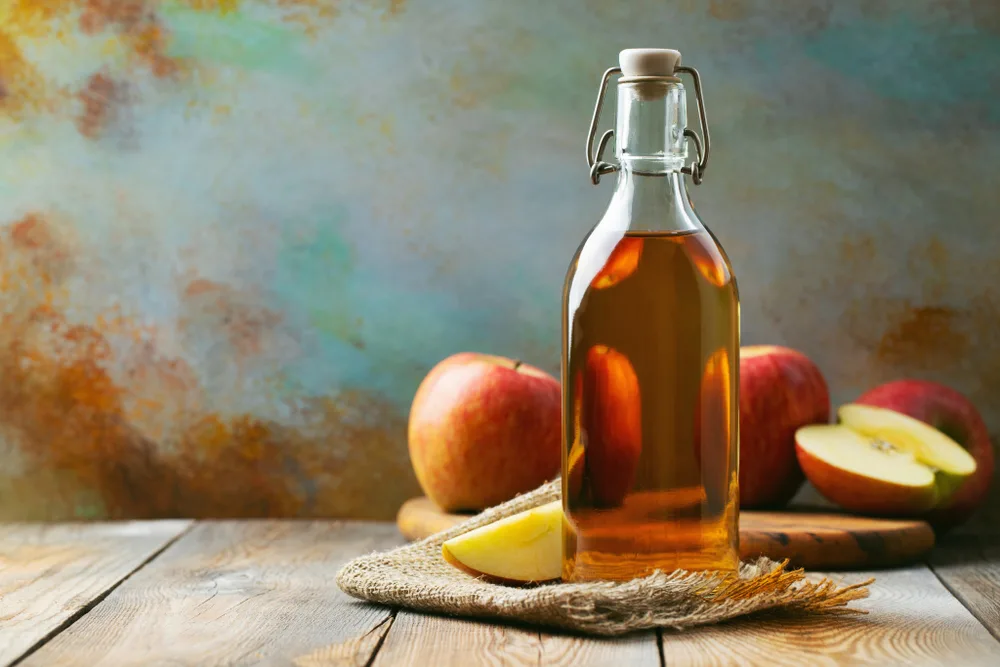
A shrub, in this case, being a non-alcoholic syrup made from vinegar, fruit and sugar.
In short, you shred a small amount of sweet apples, then pack them into a canning jar. Add apple cider vinegar and brown sugar to the apples, shaking until well combined.
Keep the jar in the fridge for about a week, then strain the apples, reserving the fragrant juice. Store your apple shrub in the refrigerator for any future cocktails.
How to Make Delicious 3-Ingredient Fruit Shrubs
17. Fermented Apple Ginger Beer
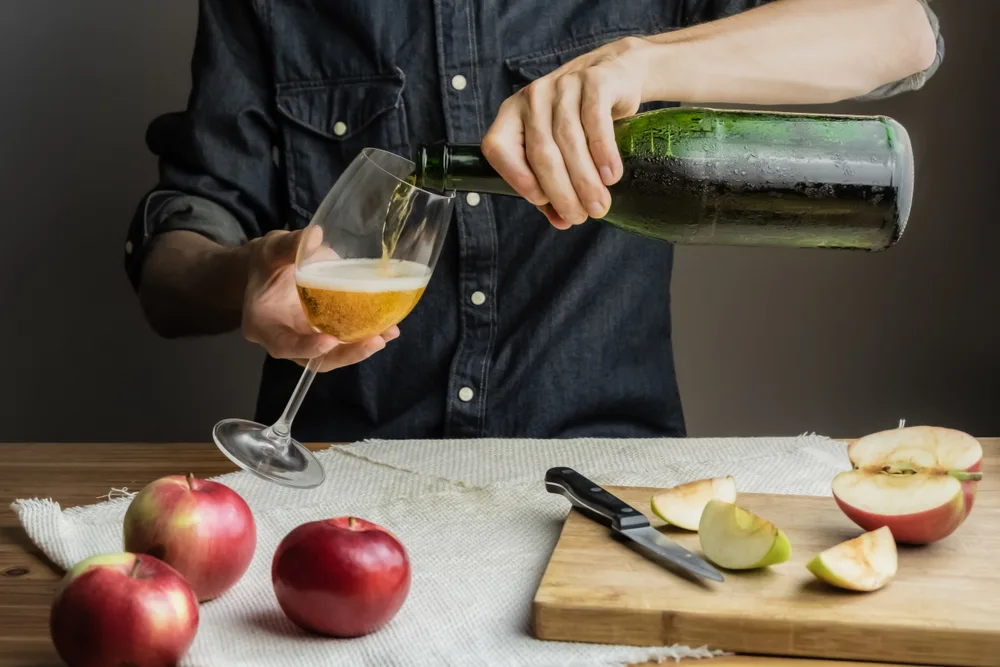
To make fermented apple ginger beer, you’re going to need to start with a ginger bug. The same one that you use for making homemade sodas.
Next up, you’ll need to buy, or make, your own apple juice or apple cider.
Fermentation time is about 7 days, leaving you with plenty of time to use up your abundance of apples in other ways.
If you’ve never made a ginger bug before, this is the fall to kick off with something spicy.
Make the following recipe and you will not be disappointed.
Fermented Apple Ginger Beer (Made with a Ginger Bug) @ Grow Forage Cook Ferment
18. Apple Brandy
Brandy can be made from fermented apples, then distilled into a potent liquor.
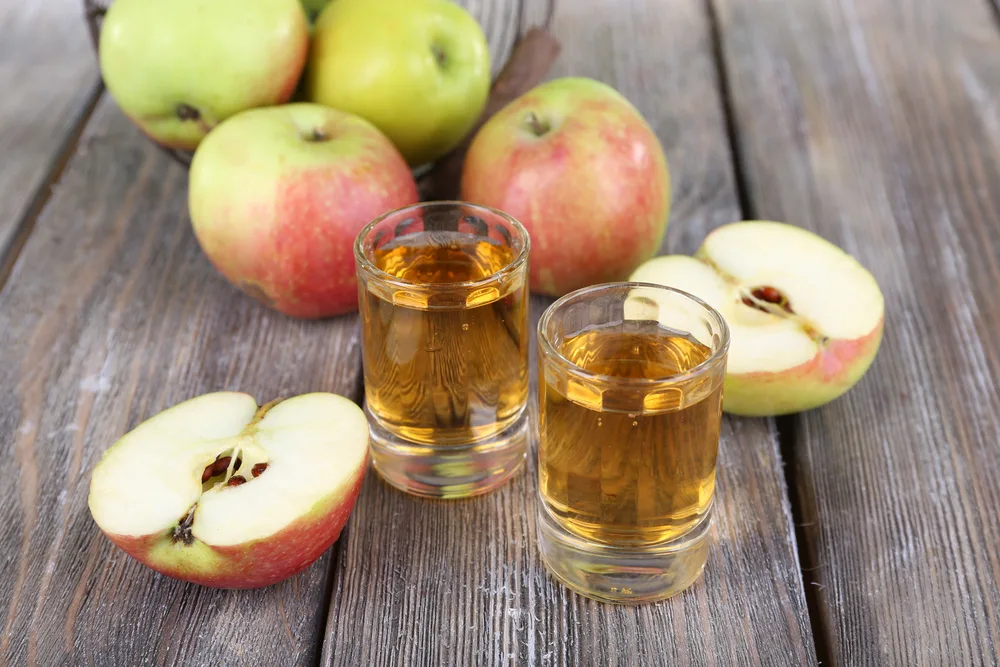
Apple brandy, on the other hand, takes ready-made brandy (which can be made from any other fruit) and infuses it with apples.
They both taste great, though one is far easier, and legal, to make at home.
19. Apple Syrup
Apple syrup can be added to sparkling water or iced tea and is perfect for celebrations, birthday parties, and all sorts of occasions of the non-alcoholic sort.
20. Preserving Apples In a Root Cellar
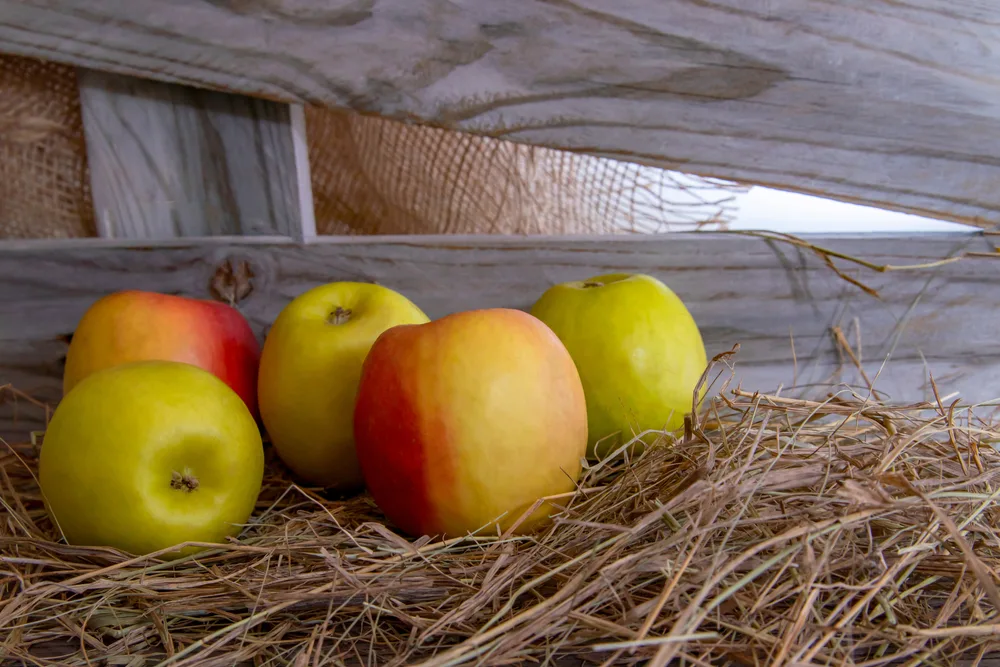
Last, yet certainly not least, in this extensive list of ways to preserve buckets of apples, is storing them in the root cellar.
If you don’t currently have a root cellar, I do wish for you, one day, to experience one.
Each October we harvest apples from our orchard one by one, directly from the tree. This careful selection ensures that the apples remain as unblemished as they can possibly be. Every apple is scrutinized for hail and insect damage.
Once they’re brought home, into the cellar they go. There they’re nestled in beds of summer hay, careful not to touch one another. Three layers high they’re stacked, with extra hay in between.
Even with winter nighttime temperatures down to -15°C (5°F), they’re still crunchy and fresh in mid-May, lasting until June.
Storing apples in a cellar, or other cold, dark room is a wonderful way to eat fresh apples all throughout the winter.
If the list of methods for preserving buckets full of apples is still not enough food for thought, go ahead and dive into making apple kraut and apple pickles as well.
Then go ahead and eat your apple a day – in the most diverse ways possible.

Get the famous Rural Sprout newsletter delivered to your inbox.
Including Sunday ramblings from our editor, Tracey, as well as “What’s Up Wednesday” our roundup of what’s in season and new article updates and alerts.

